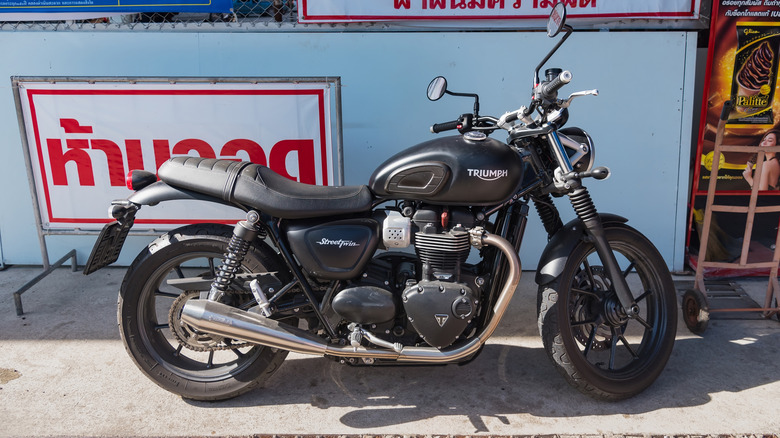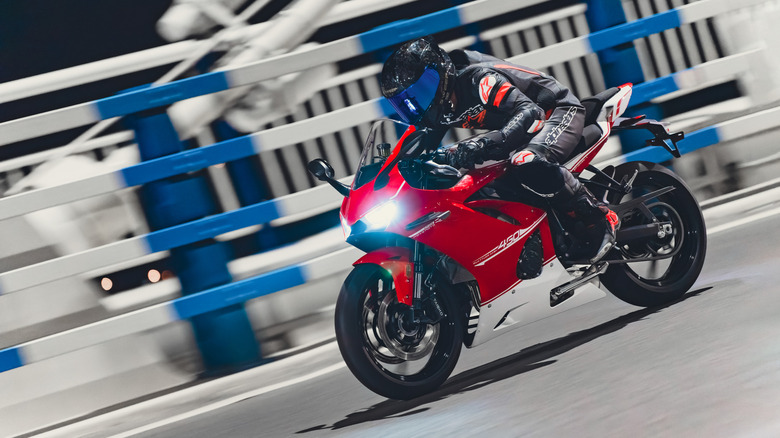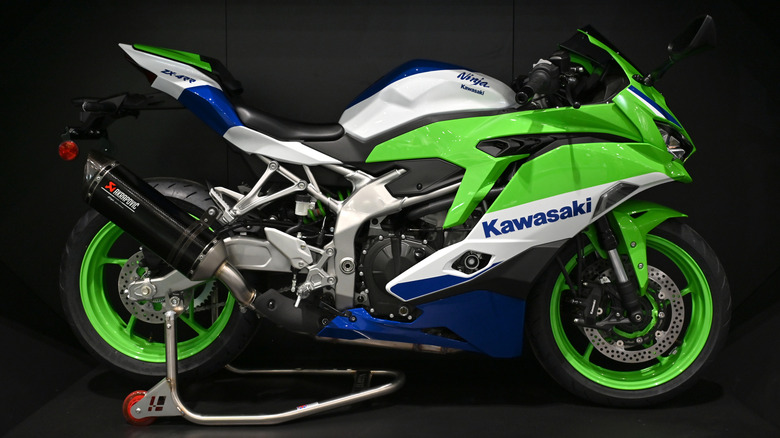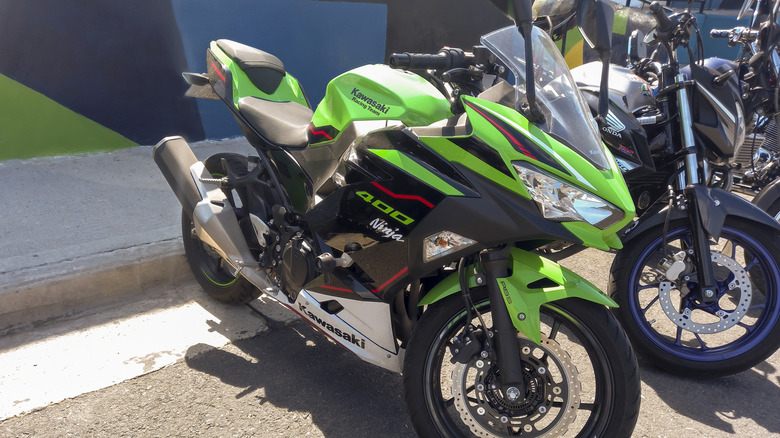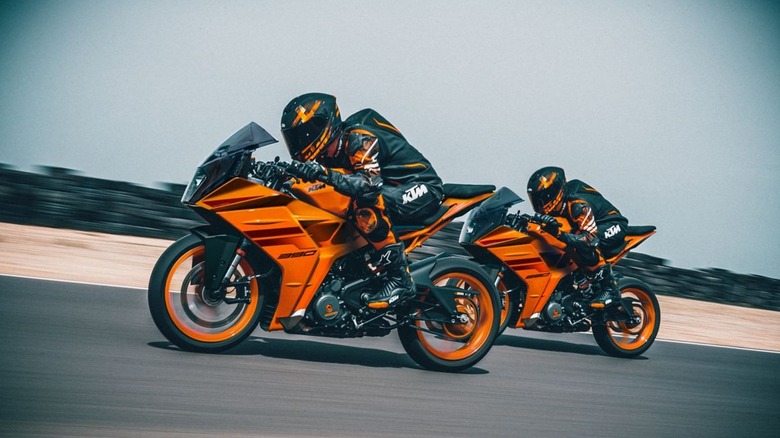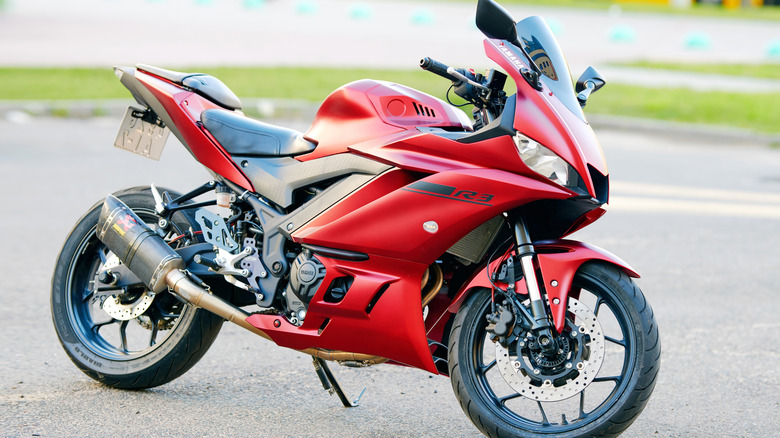5 Of The Fastest 400cc Motorcycles Ever Made
The motorcycle industry has shifted, and speed is no longer limited to liter-class superbikes. Riders today can find plenty of thrills in the sub-400cc category, with bikes that are quick and far more accessible than their bigger siblings. These machines do not achieve 200 mph like many of the fastest motorcycles ever built, but they provide sufficient speed to create adrenaline experiences that work for beginners and experts at their skill level.
The 300–400cc segment has become extremely popular among new riders and track enthusiasts who want a lightweight motorcycle. Japanese, European, and Chinese manufacturers are fighting hard to establish themselves in this market by advancing their technology and performance capabilities to levels that were previously only achievable by larger bikes. The market shows strong competition between Kawasaki, Yamaha, KTM, and new entrant Kove, with each offering motorcycles that exceed performance expectations while reaching unexpectedly high speeds for their category.
Evaluating the fastest 400cc motorcycles isn't just about the top number on a speedometer. Weight, horsepower, torque, and engine design all play a role. A lighter bike will accelerate faster, but one with a broad torque curve will make the power more usable on both the street and the track. The integration of these components leads to bicycles that deliver fast speeds together with superior control capabilities.
Kove 450RR - 137 mph
The Kove 450RR is China's bold entry into the inline-four sportbike scene, and it's not holding back. Founded by Zhang Xue, a former Chinese motocross rider, with manufacturing plants in Chongqing and Chengdu, Kove originally unveiled the 450RR as the 400RR. The production version grew to 443cc and now puts out 70hp at 13,000rpm with 29lb-ft of torque. With ram-air, output climbs to 73hp, and the motor spins to a 16,000rpm redline. Top speed is claimed at 137mph, putting it firmly among the quickest machines in the sub-500cc category.
On paper, it matches up surprisingly well against Kawasaki's Ninja ZX-4RR. The Kove makes slightly less peak horsepower but carries an enormous 51-pound weight advantage, tipping the scales at 364 pounds. That gives it a stronger power-to-weight ratio and, paired with its earlier torque delivery, suggests it could jump the Kawasaki in acceleration. Only a head-to-head test would confirm it, but the numbers make the case.
The chassis is a steel trellis design, with 41mm upside-down forks and a rear monoshock. Braking comes from dual 300mm discs up front and a 220mm disc at the rear. The Performance version upgrades to KYB suspension, radial four-piston brakes, and a TFT dash with extra electronics, including launch control and a steering damper.
Kove didn't skimp on design either. The 450RR looks sharp, drawing clear influence from Ducati's Panigale with its aero wings and aggressive bodywork. Seat height is set at 31.3 inches, with an option to drop even lower.
Kawasaki Ninja ZX-4RR - 130 mph
Kawasaki's Ninja ZX-4RR is one of the fastest 400cc motorcycles you can buy today, and it feels like the return of a lost era. The 2024 Kawasaki Ninja ZX-4RR is a throwback with modern upgrades. At $9,699 (destination charge: $650), it sits between the cheaper Ninja 400 and the bigger ZX-6R, aiming at riders who want a true four-cylinder sportbike without the size or price of a supersport.
Its 399cc inline-four makes 77hp (80hp with ram air) and revs to a dizzying 16,000rpm. That's more than double the output of Kawasaki's twin-cylinder Ninja 400, and still 10hp up on the Ninja 650. Torque is modest at 29 lb-ft, so you need to keep it spinning high, but that's exactly where the bike comes alive. During testing at Calafat in Spain, the ZX-4RR clocked 120 mph on the straight with more left to give, and testers estimated a top speed of around 130 mph. For a 400, that's remarkable.
Kawasaki hasn't cut corners on hardware. The ZX-4RR runs Showa SFF-BP forks and a BFRC-lite shock, both offering real adjustability. On the brakes, twin 290mm front discs with four-pot calipers deliver strong stopping power. Rider aids include traction control, four ride modes, and a quickshifter as standard.
On the road, it feels light and easy to manage at 415 pounds, with a roomy riding position that doesn't punish taller riders. Around town, it's surprisingly docile, but open it up and the engine wails like a miniature superbike. Fuel economy isn't great (expect around 45 to 49mpg if you're riding hard), but that's the tradeoff for a motor that thrives at the redline. Kawasaki's decision to revive the four-cylinder 400 feels bold, and the result is a small bike that rides big.
Kawasaki Ninja 400 - 119 mph
The Kawasaki Ninja 400 belongs to the entry-level sportbike segment, yet it delivers performance that makes it one of the fastest 400cc motorcycles ever produced. The Ninja 300's departure from the market led to the Ninja 400, which brought significant changes to the table. The bike gained popularity among A2 license riders in the U.K. because it received a 399cc parallel twin engine, ZX-10R-inspired chassis, and updated design.
It reaches a top speed of almost 119mph, delivering 44bhp and 28lb-ft of torque. With a 370-pound weight and 30.9-inch seat height, it provides new riders with accessibility and taller riders with comfort. The bike provides smooth handling at slow speeds but delivers quick acceleration that will catch off guard even those who ride with more experience.
The chassis is simple but effective. A steel trellis frame, non-adjustable 41mm forks, and a single rear shock keep costs under control without feeling cheap. Braking is handled by a single 310mm front disc with a two-piston caliper and a 220mm rear disc. It's not superbike spec, but it gets the job done for the performance on tap.
Reliability and build quality are strong points, with owners consistently rating it highly. Running costs are modest, with real-world fuel economy often above 60mpg and stretching to 75mpg with lighter use. The Ninja 400 doesn't try to be more than it is: a small-capacity sportbike that's fast enough to be fun and reliable enough to ride every day. The Kawasaki Ninja 400 strikes a rare balance between approachability and excitement.
KTM RC390 - 111 mph
KTM Motorcycle's RC 390 proves that small-capacity sportbikes don't have to be boring. With its 373cc single-cylinder engine producing around 40 horsepower and 24 lb-ft of torque, it has enough punch to challenge the top bikes in the lightweight category. That power, paired with a curb weight of just 362 pounds, makes it quick off the line and capable of hitting triple-digit speeds. Testing has indicated that it achieved 111mph, with more left in the tank.
Unlike many of its twin-cylinder rivals, the RC 390 delivers its power in a sharp, immediate way. The high-compression single revs freely, and the fueling is managed by Bosch ride-by-wire for smoother response. A slipper clutch keeps the rear wheel in check under aggressive downshifts, while liquid cooling ensures consistency on the road and at the track.
KTM also gave the RC serious handling hardware. The 43mm WP Apex inverted fork and rear shock are both adjustable, something rare in this class. Braking is handled by a 320mm front disc with a radial four-piston caliper and steel-braided lines, delivering strong and predictable stopping power. ABS is standard, and Supermoto ABS lets experienced riders switch off the rear for more control on track.
The ergonomics lean toward racing but remain manageable on the street. Clip-on bars and a 32.4-inch seat height create an aggressive position, yet KTM added adjustability to keep it practical.
Yamaha YZF-R3 - 110 mph
The Yamaha YZF-R3 is Yamaha's answer to the growing lightweight sportbike segment, and it has built a reputation as one of the strongest options under 400cc. Its 321cc liquid-cooled parallel twin makes 36 horsepower at 10,700 rpm and 20 lb-ft of torque at 9,000 rpm. That output may trail the Kawasaki Ninja 400, but the R3's balance of power delivery and chassis feedback puts it firmly among the fastest small-capacity sportbikes you can buy.
On the road, the R3 is approachable. A low 30.8-inch seat height and narrow frame make it accessible to new riders. At the same time, it rewards precision and good throttle control, which keeps more experienced riders engaged. At the track, the Yamaha demands commitment. To extract speed, it needs to be kept above 9,000 rpm, where the engine delivers its best pull. That narrower powerband forces riders to focus on lines and corner speed, making it an excellent training tool.
Where the R3 really shines is in handling. Its 54.3-inch wheelbase, inverted KYB fork, and lightweight 368-pound chassis make it sharp and nimble. Midcorner stability impressed Cycle World, which also reported quick side-to-side transitions. The brakes aren't as strong as some rivals, but the bike makes up for it with excellent front-end feel.
Top speed hovers just over 100 mph, depending on rider weight and conditions, which is plenty for street use and still entertaining on track.
